Skin Manifestations Cheat Sheet: 9 Skin Alert Warnings
Skin manifestations can tell you a lot about what is going on inside your body. If your skin shows signs of distress, it may be warning you.
Learn about your internal health by reading skin manifestations.
In this article, we will discuss skin manifestations.
Skin Manifestations – Why the Skin Matters
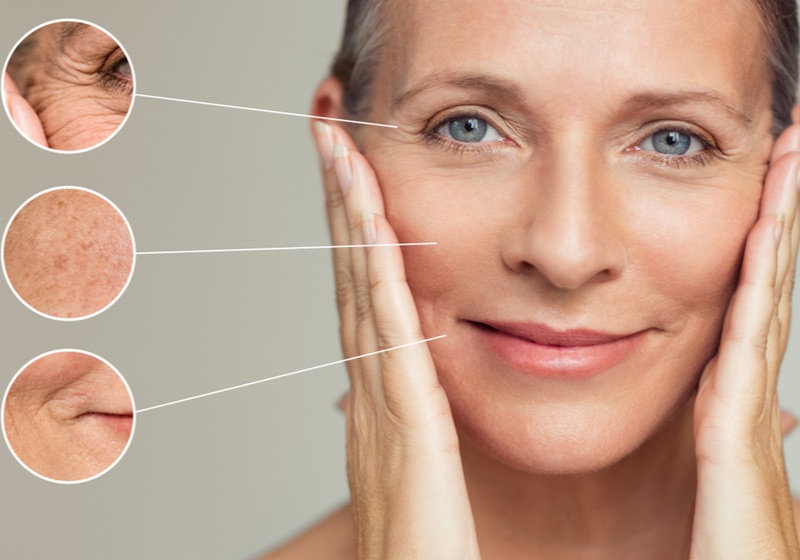
Your skin is the largest organ in your body, and it protects you from harmful chemicals by acting as a barrier.
Also, your skin is a protective barrier from the outside world. Your skin protects you from irritants and bacteria. It acts as a shield from other threats while maintaining our body's temperature.
Our skin not only protects us from risks of infection but also warns us when our body is sick.
What you eat, what you drink, how much sleep or exercise you get can all show on the surface of your skin.
Be able to detect illnesses before they become serious.
Related: 7 Warning Signs A Carb Face Gives About Your Health
In this article, we will go over the skin manifestations of 9 common internal conditions:
- Diabetes
- High Cholesterol
- Lupus
- Polycystic Ovarian Syndrome (PCOS)
- Shingles
- Lymphoma
- Allergies
- Hypothyroidism
- Liver Disease
Diabetes
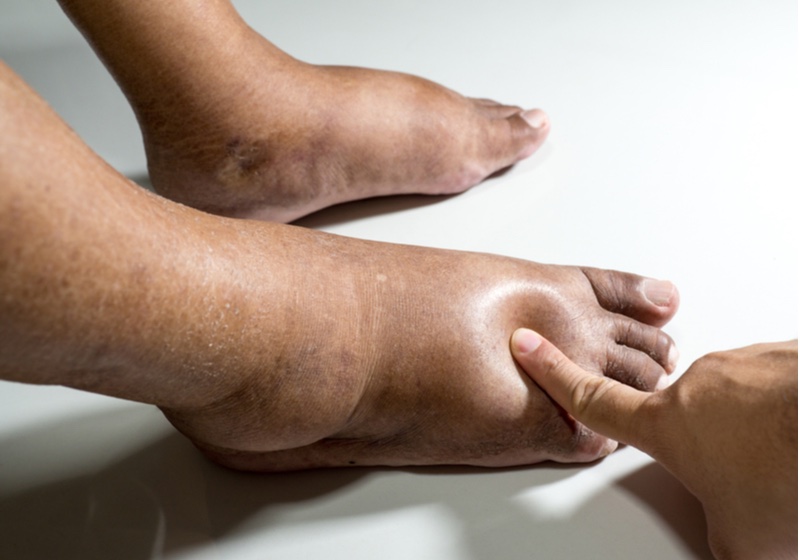
Diabetes is the most common endocrine disorder, affecting 8.3% of the population. Diabetes affects how our body processes glucose(sugar) in our blood.
Hyperglycemia is what we call high glucose levels in our bodies. Having hyperglycemia can damage our nerves or vessels, depending on where they are. Damaged nerves won't make you feel pain or heat from injuries.
Many people who have diabetes also have problems with the immune system. If the immune system is not working, wound healing will take longer, and the risk of infection rises.
Having diabetes reduces the body's ability to heal wounds and fend off infections. As a result, skin disorders will be present in 79.2% of people with diabetes.
Diabetes Effect on Skin
Cutaneous infections are more common in type 2 diabetes. In comparison, autoimmune-related lesions are more common in type 1.
Diabetic Eruptive Xanthomatosis
Diabetes is not the only disease associated with Eruptive Xanthomatosis (EX). But people with diabetes have a greater chance of having high-fat levels in their blood.
In some situations, Eruptive Xanthomatosis (EX) might be the first sign of diabetes. Eruptive Xanthomatosis is common in young males with type 1 diabetes.
Diabetes is a result of high blood sugar levels and the inability of the body to produce or use insulin.
Insulin is a hormone that converts blood glucose into energy. It also aids fat burning rather than accumulation by your body.
As a result, people with diabetes or insulin issues are more prone to have high fat.
EX bumps usually go away without treatment. But medical and lifestyle changes help. Diabetes is a chronic disease that you can manage with proper care and treatment.
Learn how you can reverse prediabetes. If you have diabetes, keep your blood sugar levels in check.
Find out more about Diabetes Symptoms on the Skin and the 9 Signs of Diabetes here.
High Cholesterol
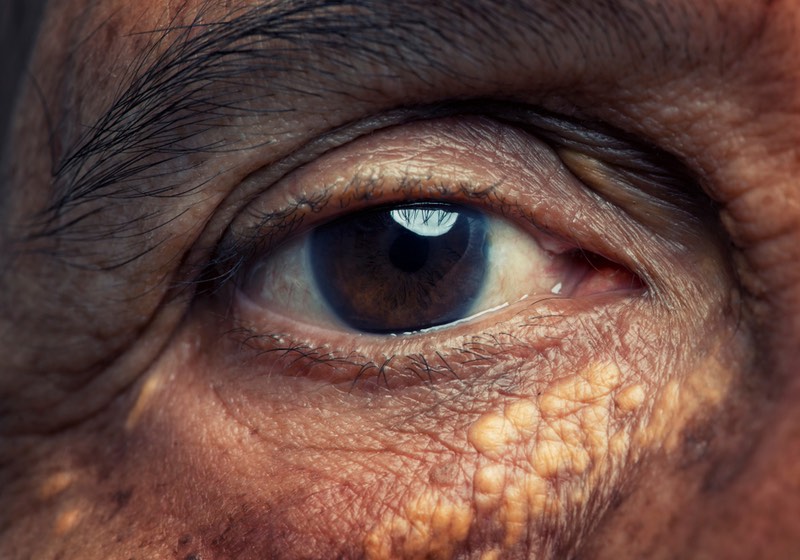
High cholesterol is when your blood contains an excessive amount of lipids. Lipid is a type of fat.
Cholesterol is a waxy substance that can cause heart disease if levels are too high.
What Are Other Names for High Cholesterol
- Lipid Disorder
- Hyperlipidemia (Too many fats)
- Hypercholesterolemia (Too much cholesterol)
What Causes High Cholesterol
Cholesterol is a fat (also called a lipid) that your body needs to work. High cholesterol is when your body produces excessive lipids and lipoproteins.
High cholesterol can increase the risk of heart disease, stroke, and other problems.
Why Is My Fat Percentage Going Up
- Type 2 Diabetes – due to changes in the body that result in insulin resistance to its action.
- Hypercholesterolemia or increased cholesterol
- Hypothyroidism
- Advanced Kidney disease
- Liver Disease
- Sarcoidosis – Chronic inflammatory that affects the lungs and lymph nodes.
- HIV/AIDS – terminal, chronic disease
Find Out NOW: Do Carbs Make You Fat?
High Cholesterol Skin
Eruptive Xanthomatosis
One sign that you may have high cholesterol is the development of indents on the skin. Also, when you have too much fat or cholesterol in your blood, your bumps get filled with fat.
Cholesterol Bumps on the Skin | Xanthomas
Eruptive Xanthomatosis (EX) causes small harmless bumps on the skin.
Xanthomas are the small bumps on the skin caused by EX.
People with high cholesterol levels are prone to get EX. Xanthoma usually forms on the elbows, knees, buttocks, and scalp.
Cholesterol Bump on Eyelid | Xanthelasmas
Another sign of high cholesterol is xanthelasma (cholesterol deposits in the eyelids).
Xanthelasmas are fatty growths that form inside or outside corners of your eyes. Xanthelasmas can cause indents to appear in these areas. Also, it may look yellowish – due to an accumulation of fat cells below the surface.
High cholesterol can cause fatty deposits in your blood vessels. Accumulation of fatty deposits in your blood vessels can result in a blood clot. Blood clots can cause a heart attack or stroke. Protect your heart with these 13 Natural Blood Thinners.
Over time, high cholesterol can cause plaque to build upon the walls of your blood vessels.
High cholesterol can lead to heart disease or a stroke. Learn How To Lower Cholesterol Naturally!
Lupus
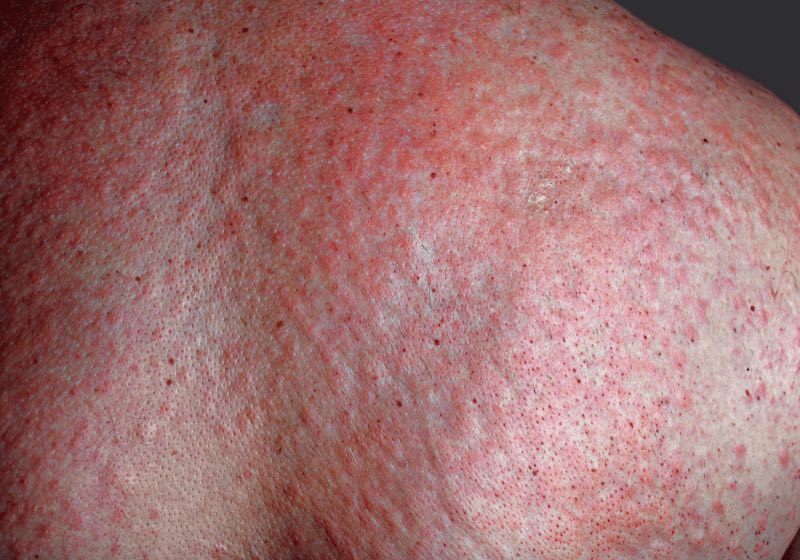
What is Lupus
Lupus is an autoimmune disease of the immune system that lasts a lifetime. Immune cells damage the body's healthy tissues, causing inflammation and tissue damage. Up to two-thirds of those suffering from this will have skin manifestations.
Round lesions on the skin are the first signs of Discoid Lupus.
What Is Systemic Lupus Erythematosus
Systemic lupus erythematosus (SLE) is the most prevalent form of Lupus. SLE is an autoimmune disease in which the immune system attacks your healthy tissues.
SLE causes widespread inflammation and tissue damage throughout the afflicted organs. SLE can affect the joints, skin, brain, lungs, kidneys, and blood vessels.
The seriousness of SLE may vary from moderate to critical.
Adequate medical treatment, preventive care, and education can enhance the quality of life.
Lupus Symptoms
- Lupus can affect any part of the body, but more often than not, it causes internal problems such as joint pain.
- Joint discomfort
- Skin sensitivities
- Rashes
- Organ-related difficulties (brain, lungs, kidneys, and heart)
These conditions may flare up. (Flare-up means fluctuating .)
What is a Lupus Flare Up A lupus flare or flare-up is when your lupus symptoms worsen, and you become ill.
You may also experience severe lupus symptoms that impact your daily life. Some of the most common lupus skin symptoms are:
Lupus Skin Problems
- Malar rash
- Photosensitivity
- Livedo Reticularis
- Alopecia
- Oral and nasal ulcers
- Hives (urticaria)
- Raynauds Phenomenon (also called Lupus Raynaud's)
- Purpura, and
- Cutaneous vasculitis
Lupus Remission
Lupus symptoms can be mild at times (meaning they are in remission).
Remission Definition: Remissions are when the symptoms and indications of the disease disappear. Depending on how long they last, they may be partial or complete remissions.
Lupus can harm the heart, kidneys, and other vital organs.
Although there is no cure available, treatments may help lessen injury. Again, there is no cure, but medical therapies and lifestyle changes can help manage it.
If you have SLE, take extra precautions to protect your skin health. Sun exposure can exacerbate the disease.
Seek expert advice from a dermatologist who is well-versed in lupus treatment.
Polycystic Ovarian Syndrome (PCOS)
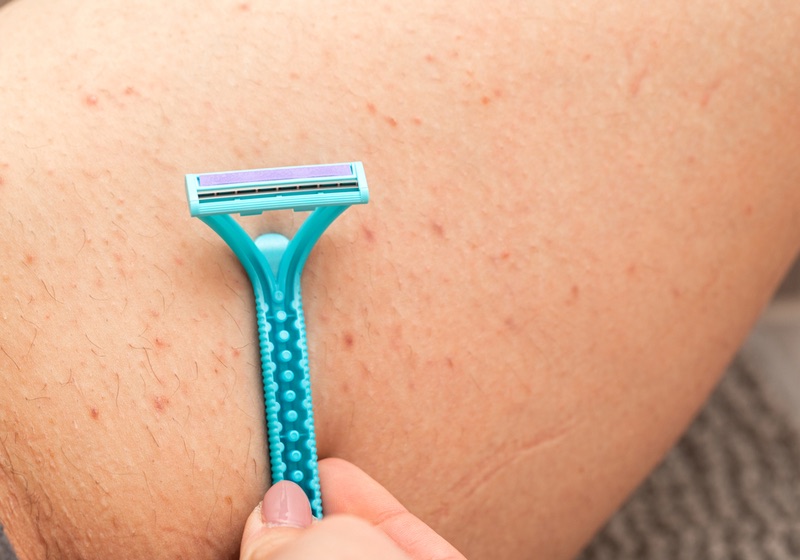
PCOS is a condition in which the ovaries produce an abnormal amount of androgens.
Polycystic ovary syndrome means:
- “poly”- many
- “cystic “- fluid sacs
- Ovary – reproductive system.
Androgens are male sex hormones usually present in women as small cysts. But some individuals without this disorder may have them too!
PCOS Skin Problems
People with PCOS syndrome secrete high levels of male hormones called androgens. Androgens trigger extra facial or leg hairs. As a result, PCOS can cause small indents to form on your skin in areas where you have hair growth. Like the arms and legs. Androgens can trigger hair growth in these areas.
Hyperandrogenism
People who have PCOS secrete high levels of androgens throughout their lives.
Hyperandrogenism Symptoms
Skin manifestations of an androgen increase are:
- Acne or oily skin
- Dandruff
- Coarse hair growth around face region
Signs of Hyperandrogenism
- Hirsutism
- Acne vulgaris
- Androgenic alopecia, and
- Acanthosis nigricans
The skin manifestations of PCOS play a critical role in diagnosis. Also, PCOS skin manifestations account for most of the symptoms in women with this disease.
Check out how Calcium D Glucarate can help your hormone imbalance.
Shingles
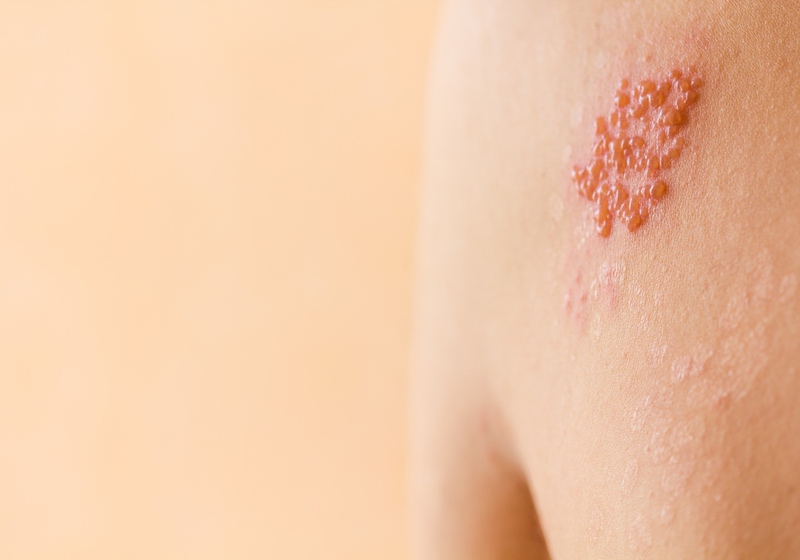
Shingle is a painful rash caused by the varicella-zoster virus.
- Varicella means ulceration
- Zoster – irritable nerve fibers
Shingles and Chicken Pox Virus
The varicella-zoster virus also causes chickenpox. This devious little rascal means little pox in Latin.
Varicella-zoster is a herpes virus that causes chickenpox.
Chickenpox is a common childhood illness. Chickenpox is contagious. If an adult develops chickenpox, it may be more severe.
People who have had chickenpox will have varicella-zoster in the body for many years.
After recovery, the virus lay dormant or inactive in nerve tissues. Skin manifestations show when stress or something else triggers it to reactivate.
Herpes Zoster
Herpes zoster (shingles) occurs when the virus becomes active again.
Shingles can appear on one side of your face or body and cause skin indents to develop.
Shingles Rash
Rashes are the most common skin manifestation of shingles. But they can also cause blisters, itching, and general discomfort. The rash usually appears on one side of the body and lasts for two to four weeks.
Shingles and Blepharitis
Shingles can also affect the surface of your eye – blepharitis.
Blepharitis is the inflammation of your eyelids. Blepharitis causes them to look red and puffy, as well as crusty or scaly. Trying to open your eyes with blepharitis might be painful.
Shingle affects the elderly more.
Shingles can also affect those who are not but have impaired immune systems. For example, cancer treatment or certain medications they're taking can cause a weak immune system.
Lymphoma
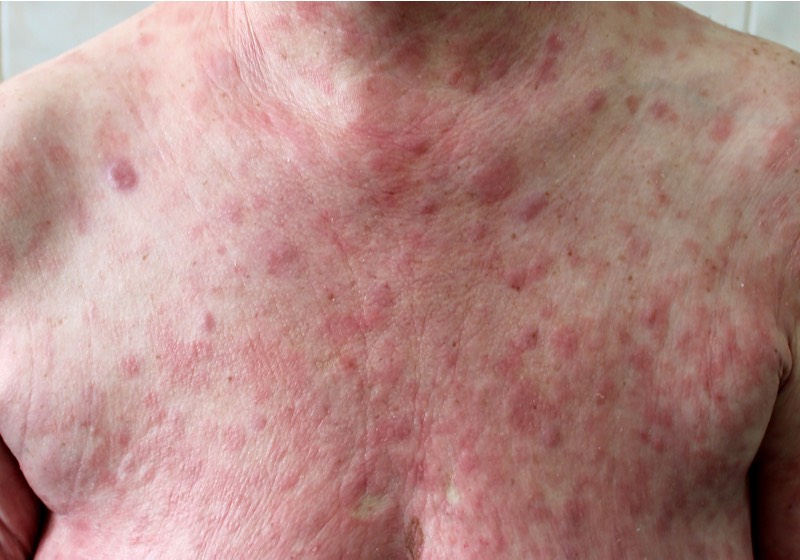
Lymphoma is a type of cancer that starts in the lymphatic system. The lymphatic system helps rid your body of toxins and waste, so any changes to this system can be a sign of cancer.
Lymphoma is the most common type of cancer that affects the lymph nodes.
One of the most common symptoms of lymphoma is skin manifestations, lumps, swelling, or a rash.
Lymphoma Rash
The most common skin manifestation of lymphoma is a rash called erythroderma. This rash can cause severe itching, flaking, and swelling.
If you notice any changes to your skin, it's very crucial to see a doctor right away. Early diagnosis of lymphoma is key to getting the best treatment possible. So if you're experiencing any unusual symptoms, don't hesitate to speak to your doctor.
Allergies
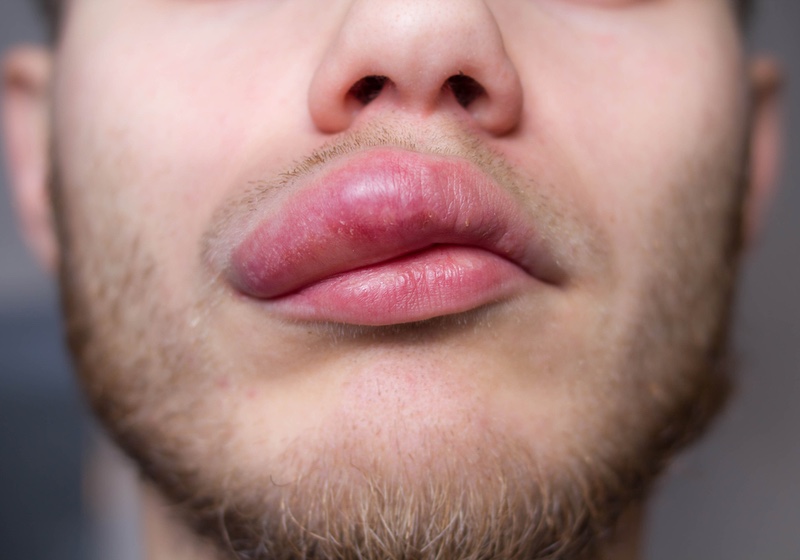
Allergies occur when your immune system reacts to something usually harmless. Allergic reactions can cause many different symptoms, including indents on the skin.
What Are Allergens
An allergen is a substance that might induce an allergic response. Some people's immune systems react to allergens as foreign or dangerous. The immune system responds by forming an IgE antibody to defend against the allergen. This response is what causes allergy symptoms.
Hives
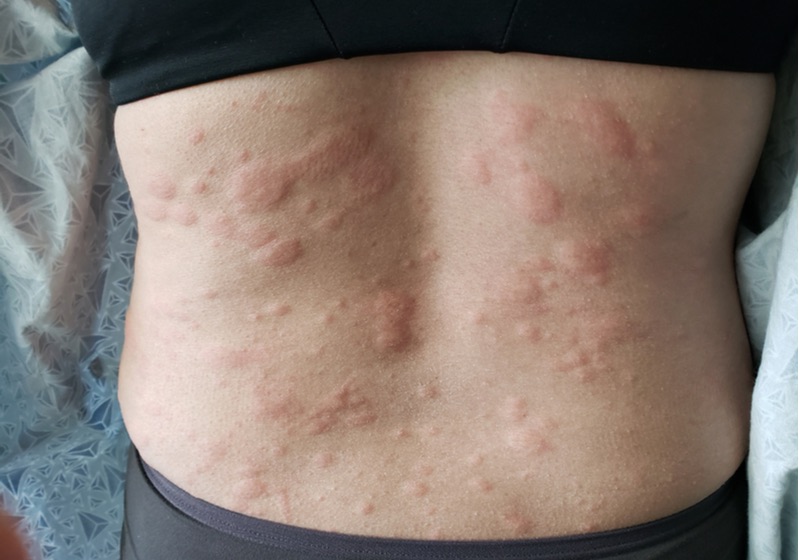
Hives (urticaria) are rosy bumps or welts that appear on the body. Hives are one common allergic reaction. Hives cause uncomfortable, itchy welts on the skin. This usual allergic response is prickling and may form on any part of your body.
2 Types of Hives
- Acute urticaria if it lasts for no more than six weeks. Exposure to an allergen or an infection may cause acute urticaria.
- Chronic urticaria if it persists beyond six weeks. It is unknown what causes chronic urticaria.
Allergies manifesting themselves in hives can be a side effect of certain medications. Besides it, Here are some other irritating assaults to skin health that can cause hives:
- Food and medicine
- Cats and dogs
- Insect stings and even
- Hay fever pollen
Determining the allergens can be challenging. Hives occur hours after contact with the allergen. Allergens are the source of your allergic skin responses. Your dermatologist might ask you to take more tests to identify the allergen.
Hypothyroidism
Hypothyroidism is when your thyroid gland does not produce enough thyroid hormone. Hypothyroidism can lead to a wide range of symptoms.
Hypothyroidism Symptoms
- Weight gain
- Fatigue
- Hair loss
- Mood changes
Hypothyroidism Skin Conditions
Lumps on the skin and fluid retention are common side effects of hypothyroidism.
Edema is the fluid built up underneath your skin. It can cause indents to appear on your lower legs and feet.
Edema may make it more difficult for doctors to hear what's inside your body using a stethoscope. That's why they usually press down on your skin when they listen to your lungs and heart.
Hypothyroidism Signs and Symptoms
- Coarse, rough, dry skin,
- Followed by the paleness of the skin (carotenemia)
- Nail changes
- Widespread hair loss
- Palmoplantar Keratoderma
- Lateral third of the eyebrows loss
- Thick Calfskin (in worse situations)
Hypothyroidism Skin Conditions
Hypothyroidism Carotenemia
Carotenemia is a rare disease in which the skin and blood are yellow.
Skin (Xanthoderma) and blood are yellow due to elevated beta-carotene levels.
Carotenemia stems from prolonged and excessive consumption of carotene-rich foods. For example, carrots, squash, and sweet potatoes are carotene-rich foods.
Most of these symptoms will fade once your low thyroid levels get treatment.
Liver Disease
Liver disease is a condition that affects your liver's ability to function. There are many liver diseases, including fatty liver disease and hepatitis.
Skin Problems Related to Liver Diseases
- Persistent itching
- Asthma
- Allergies
- Eczema
- Fatty Liver
When the liver is malfunctioning, the fats build up in and around it. Fatty Liver is the condition when there is a build-up of fats in the liver.
A fatty liver leads to weight gain around your midsection and abdomen.
Fatty Liver Disease Symptoms
- Pain in the upper right side of the abdomen
- Fluid retention around the stomach area
- Nausea, vomiting, or loss of appetite (in some cases)
Fatty Liver Symptoms on Skin
Fatty liver disease is a common cause of indents on your skin.
Both acute and chronic liver disease can manifest on the skin.
Early Subtle Skin manifestations may be early finger clubbing. An example of an obvious skin manifestation is Jaundice.
Early detection of skin manifestations may ensure a prompt diagnosis and treatment. Learn How to Cure Fatty Liver and find out the 5 Foods you should avoid for a healthy liver.
Hepatitis
Hepatitis means inflammation of the liver.
The liver is a vital organ of your body. It absorbs nutrients, screens blood, and fights infections. An inflamed or damaged liver may result in liver malfunction.
Hepatitis Causes
These can cause hepatitis:
- Alcoholism
- Pollutants
- Certain drugs
- Certain medical conditions
Hepatitis A, B, and C are viral liver diseases that result from three distinct viruses. Although they may produce similar symptoms, each virus affects the liver.
Hepatitis A is a short-term illness that seldom persists over time.
Hepatitis Skin Manifestations
Itchy skin might be a sign of chronic hepatitis or cirrhosis. For example, with hepatitis C, you could notice swollen red patches on your legs.
Cirrhosis
Cirrhosis is when the liver has developed scarring (fibrosis). Many liver diseases and situations can cause fibrosis.
Some Causes of Liver Damage:
- Liver Disease (Hepatitis)
- Excessive alcohol consumption (Chronic alcoholism)
When any causes damages the liver, it tries to heal itself. Scar tissue develops as a result of the healing process.
Cirrhosis of the Liver Skin
Indents may appear on the skin due to tissue loss from organ failure.
Cirrhosis is a form of scarring that makes it difficult for blood vessels in your body to work.
A damaged liver can't clear toxins from the blood, so they build up in the skin and cause indents.
In the advanced stages of cirrhosis, scar tissue builds. Scar tissue build-up makes it harder for the liver to operate.
Decompensated Cirrhosis is when the liver hardly operates. A liver not functioning is life-threatening.
Skin manifestations caused by warts (a symptom of liver disease) link to cirrhosis. Thus, warts are another symptom of cirrhosis.
Liver damage by cirrhosis is irreversible. But, early detection and treatment of its cause may prevent more harm or reverse it. Check out these 12 Early Signs of Liver Cirrhosis.
Liver Cirrhosis Skin Changes
Cirrhosis seldom reveals any symptoms until there is too much liver damage.
Skin Signs of Liver Damage
When skin manifestations do occur, liver cirrhosis skin changes may include:
- Edema (fluid retention) in your legs, feet, or ankles (swelling) Ascites Cirrhosis Stage
- Bleeding or bruising
- Itching skin (liver disease itching)
- Yellow discoloration in the skin and eyes (jaundice)
- Fluid accumulation in your abdomen (ascites)
- Spiderlike blood vessels on your skin
- Redness in the palms of the hands
If you have any skin manifestations, make an appointment with your doctor.
Check out this video of The Doctors to learn more on What Your Skin is Telling You about Your Health:
We cannot cover every internal disease and skin manifestation. But we tried to provide you with these nine common ones. We cannot always see what is happening inside our bodies, but the skin can give us signs. We hope that through this way, we help you stay alive!
What was the most surprising skin manifestation that you learned? Please share with us in the comment section below.
Join the healthy living conversation with us on Facebook, Instagram, and Pinterest. We want to hear your story – let's connect via these channels. Find our community online and Join the healthy living revolution today!
Trending
Tongue Color | 7 Scary Tongue Color Meanings
Lecithin Benefits and Side Effects: 10 Surprising Truths
Get Updates
SIGN UP FOR OUR NEWSLETTER TODAY

Tongue Color | 7 Scary Tongue Color Meanings

Lecithin Benefits and Side Effects: 10 Surprising Truths

Related

Tongue Color | 7 Scary Tongue Color Meanings

